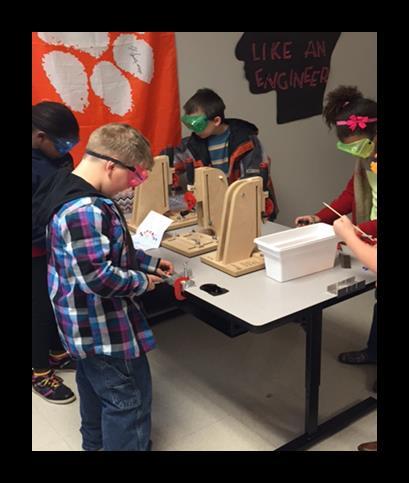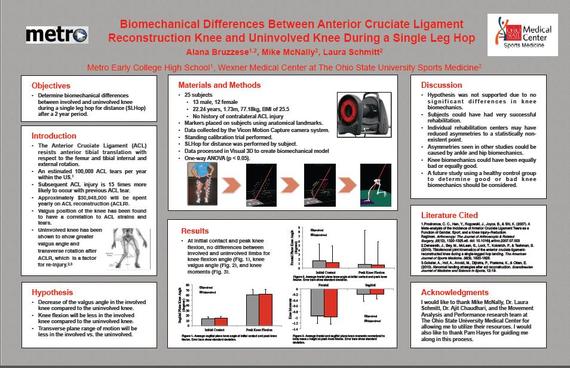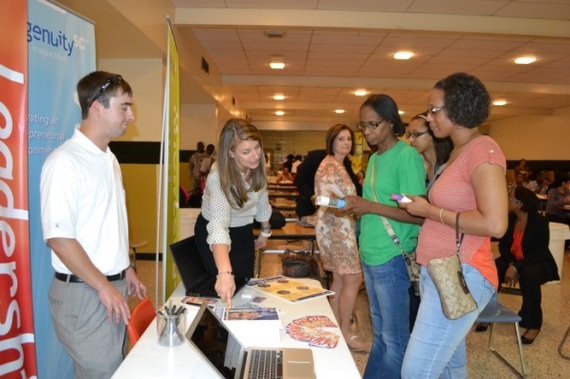
Responding to growing calls to improve science, technology, math and engineering (STEM) education, increasing numbers of public and private schools are touting their specialized STEM programs, largely centered on special technology or a particular set of course offerings. While some of these programs may be of high quality, parents and community leaders should kick the tires of local STEM education initiatives to determine the extent to which these efforts are based on what research shows will increase STEM knowledge and problem-solving skills and, as a result, spark student engagement and interest in STEM careers.
In order to do this you need to look for a number of key factors, including the extent to which STEM efforts serve all students equally- and well. Do they encourage learning across disciplines; promote student inquiry and real-world problem solving; and connect students with people working in real STEM-related careers on campuses, in industry and in the community?
My organization, AdvancED, is in the business of measuring the quality of education institutions and their programs. Based on our work, we have developed standards and criteria for parents and community leaders to quickly gauge the quality of the STEM education programs in their community. You can use these questions -- and the examples of schools that we have certified as being strong in STEM -- to discuss with school leaders how they might strengthen their STEM offerings.
Here are some initial questions you can ask:
- Is the STEM learning program interdisciplinary and problem-based, encouraging deeper learning through real-world projects? In excellent STEM programs, students learn not just science, technology, engineering, and mathematical processes and practices but also across and beyond STEM disciplines. They develop competencies such as collaboration and communication skills necessary for success in college and career. Middleton Magnet High School in Tampa, Florida, for example, encourages an interdisciplinary approach by giving students project-based assignments on a regular and consistent basis where they have an opportunity to identify a problem, develop a solution, follow a process, and then design and market a product. In addition, students create and present project-based assignments outside of the traditional classroom that connect their learning to real-world applications. For example, students in Middleton's Architecture, Construction, and Engineering (ACE) program designing a hotel for Tampa's historic Ybor City. Students work in groups with their ACE mentors, who are engineers by profession.
- Are students required to demonstrate their work in authentic ways--through projects, plans, and presentations that mirror what they will be required to do in their careers and in further learning? Effective programs use performance-based assessments that demonstrate outcomes required for the next level of STEM learning and for post-secondary education and work. You may want to ask the extent to which students have multiple opportunities to present their STEM learning to a range of stakeholders within and outside of the school and to clarify, elaborate on, and defend their thinking and conclusions using verbal, symbolic, and visual means. For example, at Metro Early College High School in Columbus, Ohio students are afforded multiple and on-going opportunities to demonstrate their learning through formal and informal performance-based assessments. Gateway presentations, an example of authentic performance-based assessments, are required for upper level students who are ready to enroll in college courses and graduate from high school. These students must defend their level of preparedness to enroll in college and then, upon completion of the courses, defend their level of success to graduate. Adults assess students using clear measures of what defines different levels of performance.
- Are students working independently and collaboratively and learning the way scientists do--by asking questions that lead them to discovering solutions to authentic and complex problems? Inquiry lies at the heart of STEM, and schools need to ensure that students have learning experiences focus on real world, locally relevant, complex, open-ended problems that require problem identification, investigation, and analysis. In excellent STEM programs, creative problem solving is highly valued and encouraged, and students have multiple opportunities to work independently and collaboratively to solve problems. At Logan High School in Logan, Ohio advanced classes in biomedicine allow students to explore science in action, take on the role of biomedical professionals, and investigate real-world medical problems. Students study the effects of outside stimuli on the body's blood pressure and work collaboratively using data acquisition software to monitor body functions, including respiration and blood pressure, in a variety of settings.
- Does the STEM learning program have actively engaged business and industry partners, as well as local colleges and universities, community organizations, and families? Effective programs break through the schoolhouse walls to invite professionals, academics and others who can be supportive of teachers and students. In effective programs, students participate in formal programs of mentorship, apprenticeship, internships, research, or job shadowing with researchers, business/industry, or other community partners. Mount Lebanon Elementary School in Anderson, South Carolina parlays its location near Clemson University and the Tri-County Technical College to provide on-site mentorships and job shadowing to its students in grades 3-5. Clemson's Mechanical Engineering Department senior-level students work side by side with Mount Lebanon's elementary-age students to design, develop and produce products such as a wind tunnel for the school's use in the STEM lab.
Pat Forrester, an astronaut on loan from NASA to Clemson, frequently speaks to students about STEM careers and math/science integration. Community, post-secondary, business/industry partners, and families actively support and are engaged with teachers and students in the STEM program.
- Does the school go out of its way to support participation by minority students and girls and other groups that are traditionally underrepresented in STEM programs? Effective schools and programs have a STEM outreach plan with measurable goals to significantly increase enrollment, support, and retention of students from under-represented groups and can demonstrate progress meeting such goals. Ask about what types of things the school does routinely and systematically to support and retain students from under-represented groups. At W.J. Keenan High School in Columbia, South Carolina the majority of the school is comprised mostly of minority students and students from low-income families. However, the school ensures that all students who are interested in STEM have an equal opportunity to enroll and succeed in this program. Half of the slots in Project REAL (Raider Engineering and Academic Leadership) are reserved for female students. To further promote female students' interest in pursuing STEM, Keenan has set an equal number of slots for male and females in its freshman engineering program. In order to extend their reach beyond its walls, students with the Project REAL program provide mentorship to other students through programs such as the FIRST Lego League, both within the Richland One District as well as rural areas outside of the district.
- Does the program ensure that teachers and school leaders themselves become STEM learners to become more effective in leading STEM programs? Quality programs don't stop with students. All STEM educators need opportunities to stay current about practices in the STEM world through professional learning. See the extent to which STEM educators in the school have ongoing opportunities to expand their proficiency in the use of technology and whether teachers have daily common planning time to collaborate and discuss integrated STEM curricular and instructional practices. Lower Richland High School in Columbia, South Carolina, uses a train the trainer model to provide its teachers job-embedded professional development for STEM-related instruction such as scientific inquiry, problem-based learning, project-based learning, engineering, soft skills, the use of technology, and the integration of STEM skills across the curriculum. Professional development for staff members is provided through partnerships with EngenuitySC and the University of South Carolina Professional Development School initiative, and the Richland One School District ensures that STEM-specific professional development is offered to educators on "Technology Thursdays".
These questions are based on specific indicators AdvancED uses to certify effective STEM programs, a process conducted by teams of expert reviewers who visit schools with these programs. Our determination of effectiveness is based on analysis of evidence, data and information, interviews with school officials and stakeholders, and examination of student engagement through classroom observations. We also have posted a series of articles by STEM experts and education leaders in our online publication, The Source, providing additional ideas about what makes for quality STEM programs if you want to learn more.
Quality in STEM institutions is measurable and can be recognized by looking at essential indicators attributed to an effective program. Parents and community leaders should not take at face value any claims to quality. The entire community has a crucial role to play in determining whether their schools make the grade when it comes to STEM and in collaborating with STEM educators to make programs even more effective.


